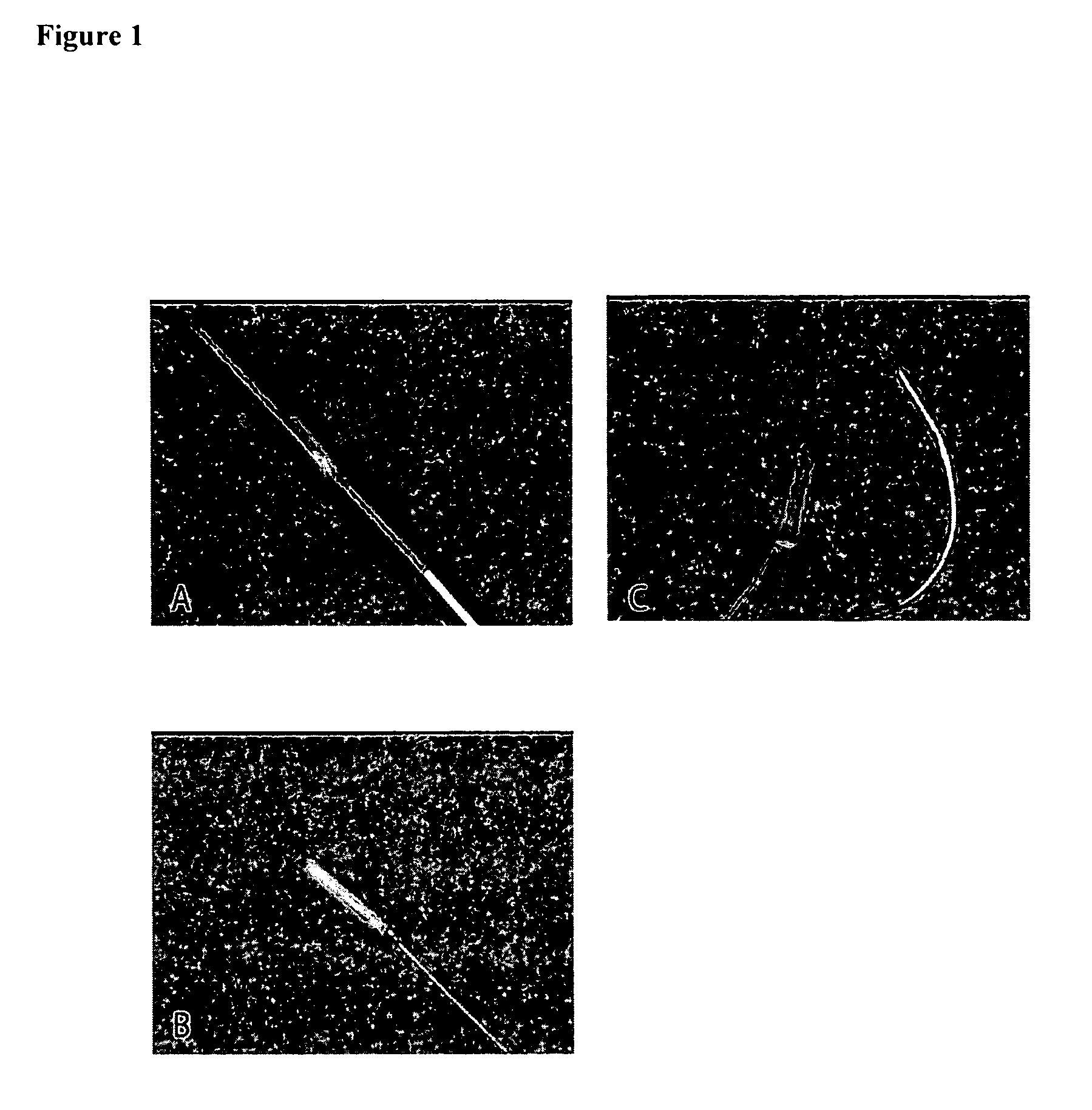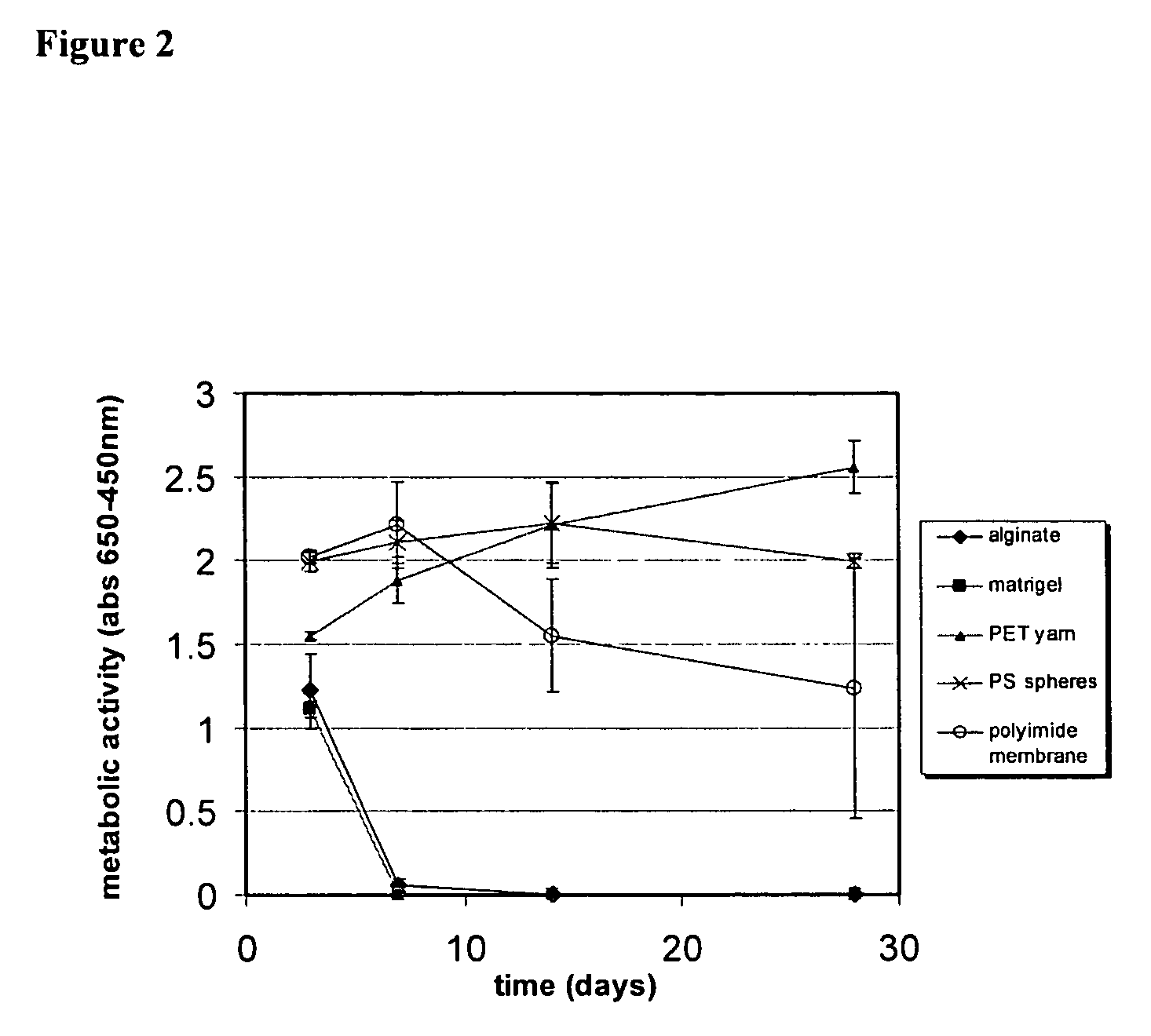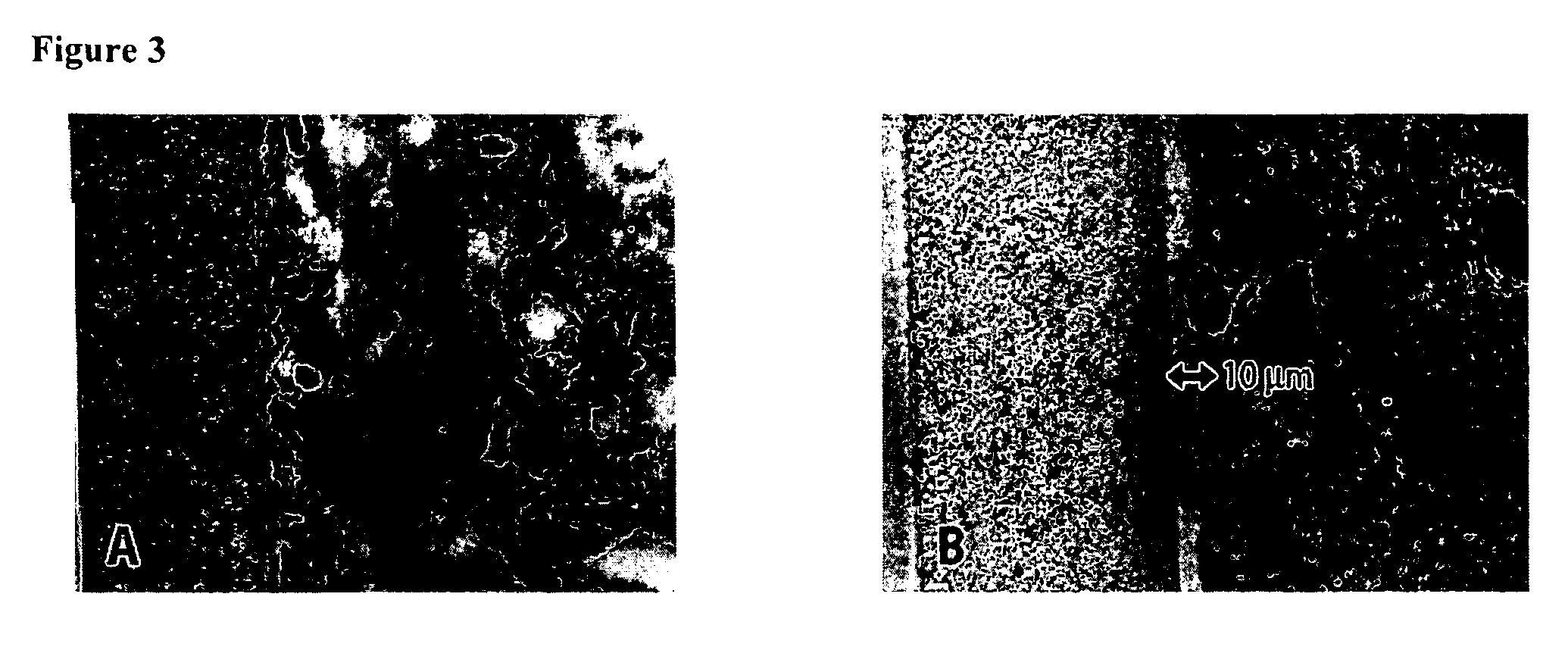Micronized device for the delivery of biologically active molecules and methods of use thereof
a micro-device and biological active technology, applied in the field of encapsulated cell therapy, can solve the problems of loss of transplant function, eventual necrosis of transplanted tissue or cells, and limited application, and achieve the effect of long-term functional transplantation and limited application
- Summary
- Abstract
- Description
- Claims
- Application Information
AI Technical Summary
Benefits of technology
Problems solved by technology
Method used
Image
Examples
example 1
Comparison of “First Generation” and Micronized ECT Devices
Materials and Methods
[0151]ECT devices were fabricated to allow intravitreal implantation into the eye. The first generation devices totaled 600 μl in displaced volume (1.1 mm diameter, 6 mm length). Micronized ECT devices were fabricated with a total displacement volume of 0.05 μl (200 mm diameter, 1 mm length). A comparison of the size differences between the first generation and micronized ECT devices is provided in FIG. 7. Encapsulated cell lines used in these studies were genetically modified to secrete either ciliary neurotrophic factor (CNTF) or interleukin-10 (IL-10). Devices were designed to produce a high and a low dose delivery for both CNTF and IL-10. Implant periods ranged from 2 weeks to 18 months in the rabbit model and were 2 weeks in the rat model. Protein delivery levels were quantified over the course of the studies and clinical exams were conducted to assess ocular irritation and surgical wound healing.
Re...
example 2
Delivery of Encapsulated Cell Technology (ECT) Micronized Device Implants Using a Small Gauge Needle
[0161]Implantation of first generation ECT devices, which are currently in Phase II human clinical trials for retinitis pigmentosa and age-related macular degeneration, requires a 2.0 mm sclerotomy and three sutures to close the incision site. Thus, development of an ECT micronized device capable of producing comparable protein levels that could be implanted through a small gauge needle would improve the surgical procedure and minimize surgical risk.
Methods
[0162]Micronized devices were prepared that contained encapsulated cells transfected to produce either ciliary neurotrophic factor (CTNF), interleukin-10 (IL-10) or pigment epithelial derived factor (PEDF). Implantation of such micronized devices delivering CNTF was tested using a 23-gauge needle having a modified syringe. CNTF-producing devices were surgically implanted into New Zealand white rabbits and evaluated at 2 weeks and 1-...
example 3
Safety and Pharmacokinetics of an Injectable Micronized Encapsulated Cell Technology Device
[0167]Three concurrent studies of a first generation encapsulated cell technology (ECT) device delivering ciliary neurotrophic factor (CNTF) are in human clinical for early and late-stage retinitis pigmentosa and age-related macular degeneration. ECT devices used in these trials are implanted in patients eyes using conjunctival excision, sceral incision, and inter-ocular placement followed by securing the device followed by suture closure of the sclera and conjunctiva. The current study reports on the research efforts to develop the long-term pharmacokinetics and safety profile of a smaller profile, micronized ECT device capable of delivering efficacious therapeutics, implanted using sutureless, 23-gauge injection procedures.
Methods
[0168]Human retinal pigment epithelial cells genetically modified to continuously secrete CNTF were encapsulated in 300 micron diameter hollow fiber semi-permeable ...
PUM
| Property | Measurement | Unit |
|---|---|---|
| volume | aaaaa | aaaaa |
| length | aaaaa | aaaaa |
| length | aaaaa | aaaaa |
Abstract
Description
Claims
Application Information
 Login to View More
Login to View More - R&D
- Intellectual Property
- Life Sciences
- Materials
- Tech Scout
- Unparalleled Data Quality
- Higher Quality Content
- 60% Fewer Hallucinations
Browse by: Latest US Patents, China's latest patents, Technical Efficacy Thesaurus, Application Domain, Technology Topic, Popular Technical Reports.
© 2025 PatSnap. All rights reserved.Legal|Privacy policy|Modern Slavery Act Transparency Statement|Sitemap|About US| Contact US: help@patsnap.com



